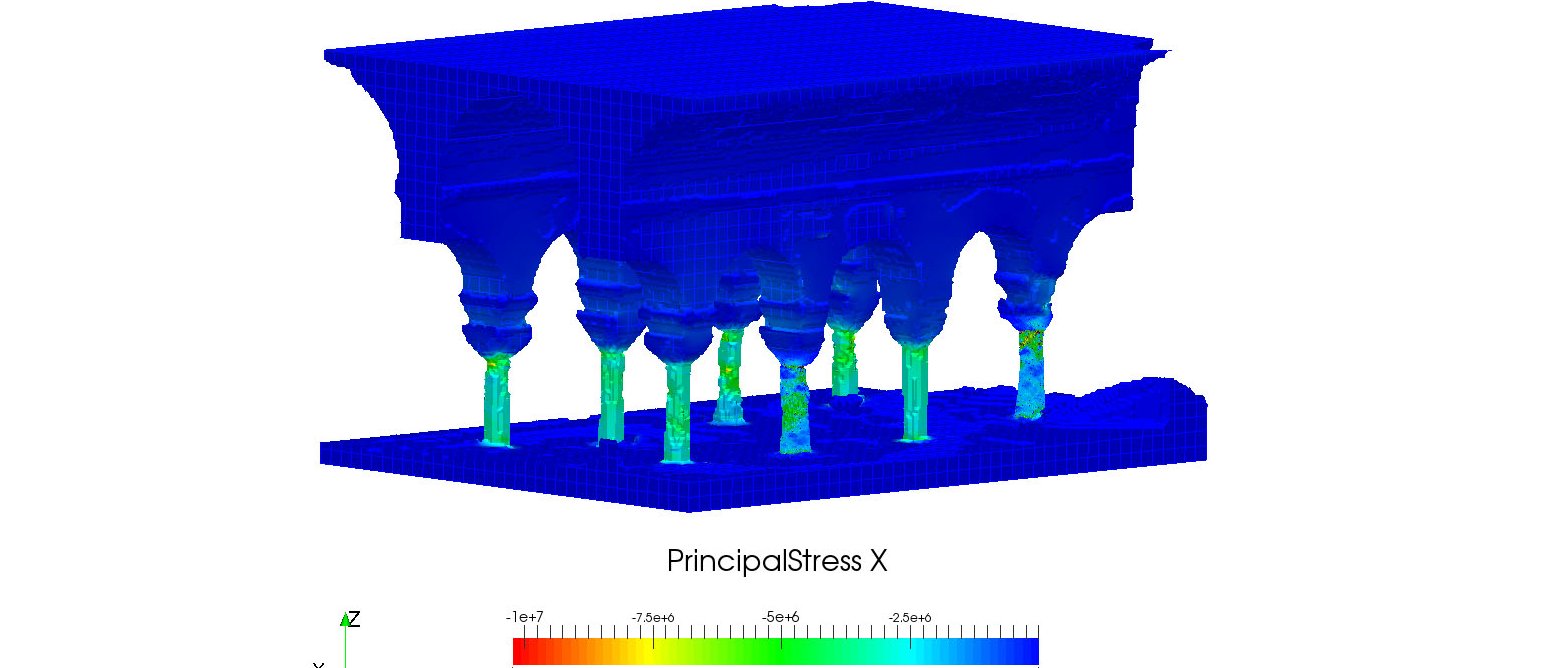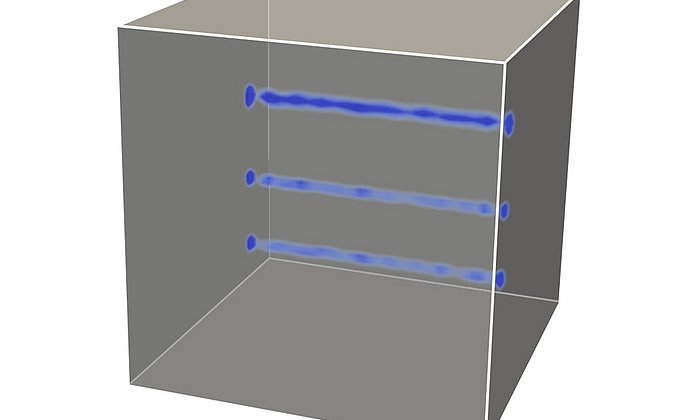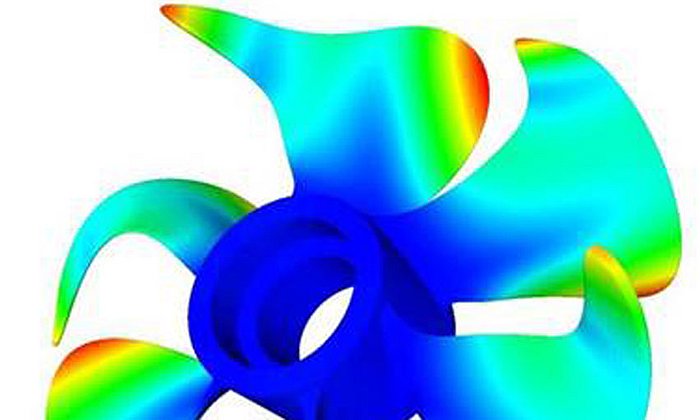From mobile phone photo to static calculations
How stable are ancient structures?

In the 1960s a column of the Hagia Tekla Basilica cistern in Turkey collapsed and had to be replaced with a concrete pillar. Other columns of the ancient structure have suffered over time as well. In order to assess the danger of their collapsing experts have to know which forces are acting within the structure. But how can this be done in a non-intrusive manner?
"Engineering practice very often employs the Finite Element method for calculating a structure's stress state," explains Dr. Stefan Kollmannsberger of the TUM Chair for Computation in Engineering. "For example, before a bridge is built, engineers have to know whether or not the planned structure will be able to withstand the load resulting from road traffic. Engineers need proof that both the expected deformations and the stress placed on the material are within defined threshold values."
Mobile phone photos can be used to generate point clouds
The complex geometries involved make it impossible to directly calculate the physical behavior of the entire structure as a whole. Thus, the model is divided into what are referred to as Finite Elements, each of which possesses simple geometrical properties. The resistance of each of these elements can then be calculated based on certain assumptions about material behavior and possible states of deformation under the application of various loads. "When the elements are assembled back together again, the behavior of the structure as a whole can be assessed," says Kollmannsberger.
But while the geometries of modern bridges are already known from its blueprints, the geometry of ancient structures has to be determined first. This can be carried out, for example, using a laser scan which localizes points on the structure in space, resulting in what is called a point cloud. Even mobile phone photos can be used to generate point clouds, requiring nothing more than a series of images of an object from several different perspectives. If the camera position and the focal length of the lens are known, the pixels in the various images can be correlated with one another. It is then possible to compute the positions of the points on the surface of the object in space.
Precise results with simplified procedure
In the conventional approach, the point cloud is then used to determine the approximate volumes of the structure and to apply the Finite Element method to this volume. "However, this is very difficult, since first the surface has to be reconstructed based on the point cloud," says Kollmannsberger. "Then, the volume has to be segmented into the Finite Elements." This step may be quite tedious: In order to produce meaningful results, the boundaries of the elements have to match the boundaries of the structure, while at the same time the aspect ratios of the finite elements must be close to one.
"We asked ourselves whether it would be possible to calculate the deformations and forces within the structure directly using the point cloud," Kollmannsberger explains. Here the researchers took advantage of a trick. They expanded the Finite Element method in such a way that a point-by-point representation of the object structure was sufficient. In spite of the simplified geometrical representation, this procedure is no less accurate than the original method. The researchers have named the new approach the "Point Cloud Finite Cell Method".
Much faster calculations possible
For the new procedure it is sufficient to decide for each point in space whether the point is located inside or outside of the structure. The structure itself as well as its surroundings can first be divided into uniform Finite Elements without taking the exact geometry into account. Then computations determine whether or not particular given points belong to the structural object. These points are then allocated to the material properties of the structure. A numerically very "soft" material is allocated to those points which are not within the structure.
"It turns out that this method is exactly as good at determining the mechanical behavior of the structure as the conventional Finite Element method," says Kollmannsberger. "But the new method makes it possible to employ a calculation which can be fully automated and which is more than anything much faster. This brings structural mechanical predictions for solid and relatively homogenous structures using images from drones into reach."
The columns of the Hagia Tekla Basilica cistern are, by the way, still stable. Nevertheless, high levels of stress are evident.
László Kudela, Stefan Kollmannsberger, Umut Almac, Ernst Rank: „Direct structural analysis of domains defined by point clouds“, Computer Methods in Applied Mechanics and Engineering, Volume 358, 2020,
doi.org/10.1016/j.cma.2019.112581.
Technical University of Munich
Corporate Communications Center
- Stefanie Reiffert
- stefanie.reiffert@tum.de
- 0049/89 289 10519
- presse@tum.de
- Teamwebsite
Contacts to this article:
Dr.-Ing. Stefan Kollmannsberger
Technical University of Munich
+49 89 289 25021
kollmannsberger@bv.tum.de

